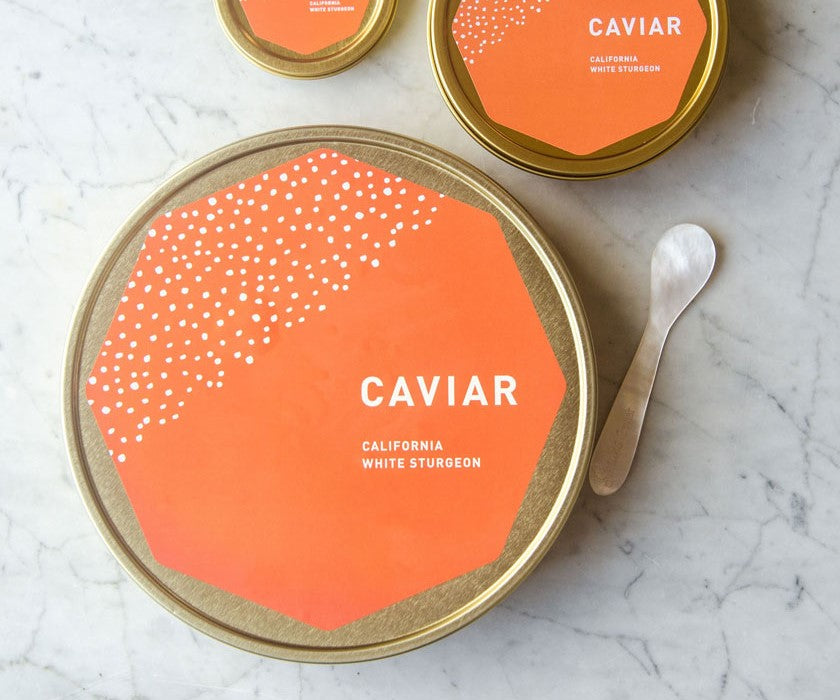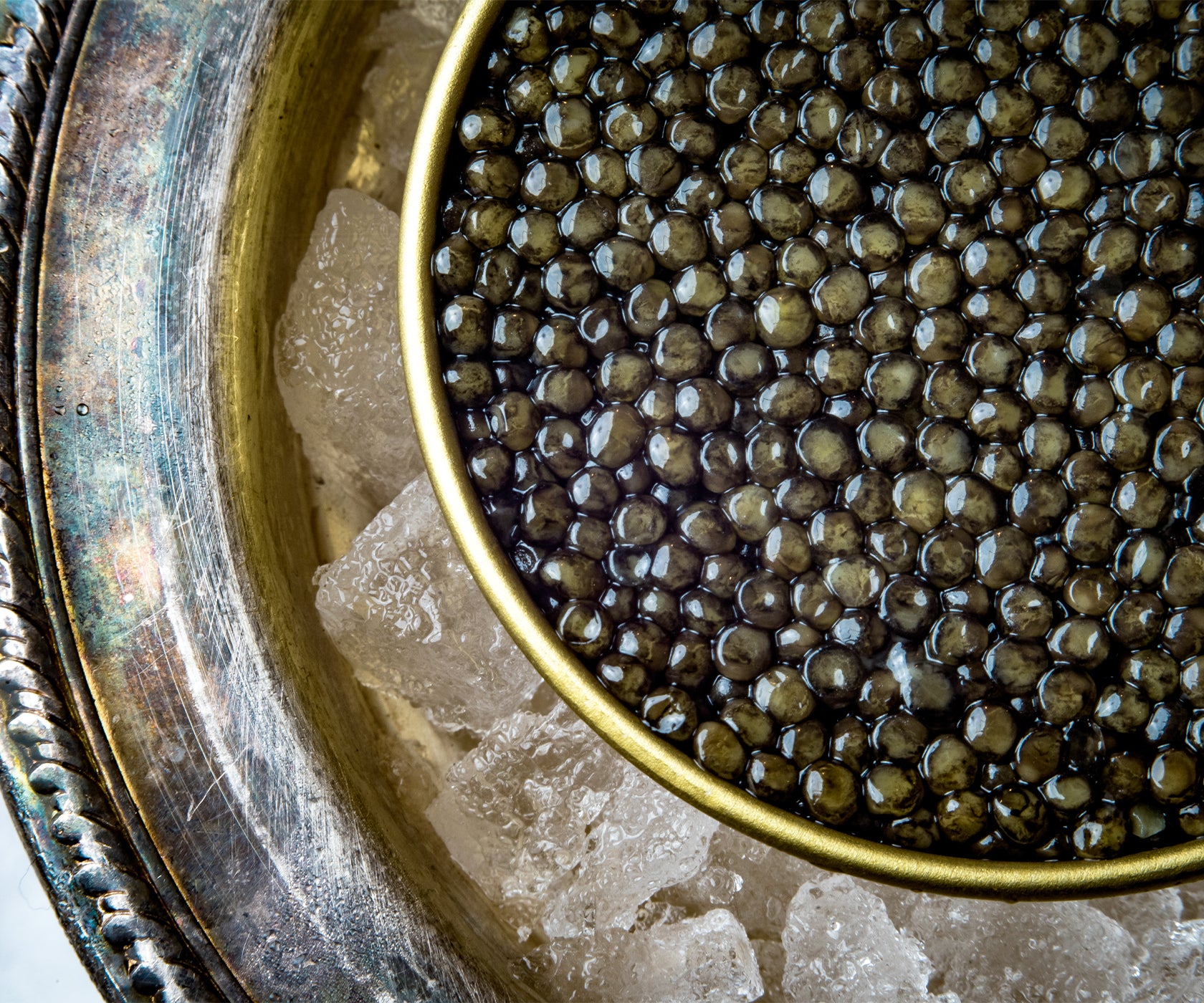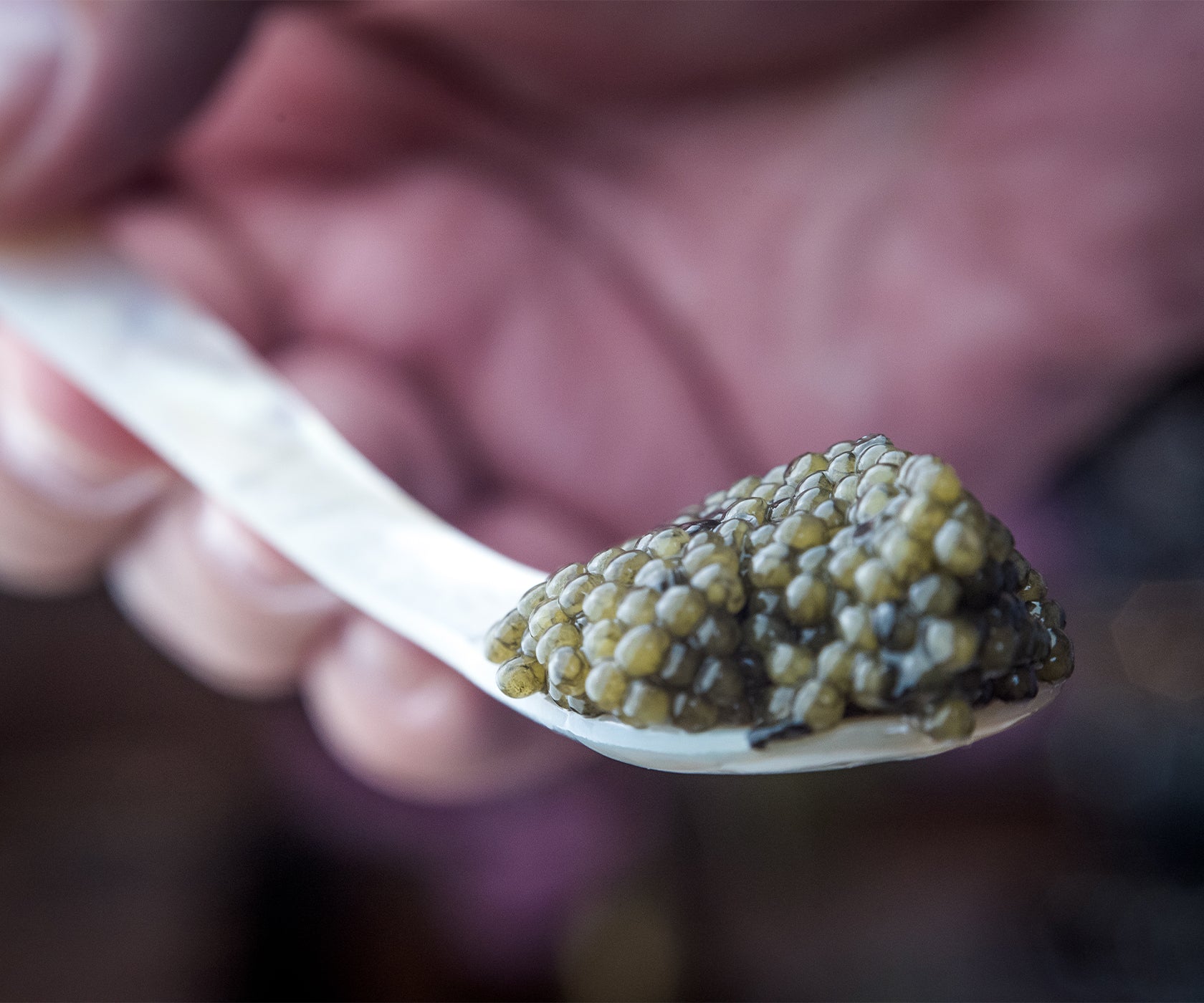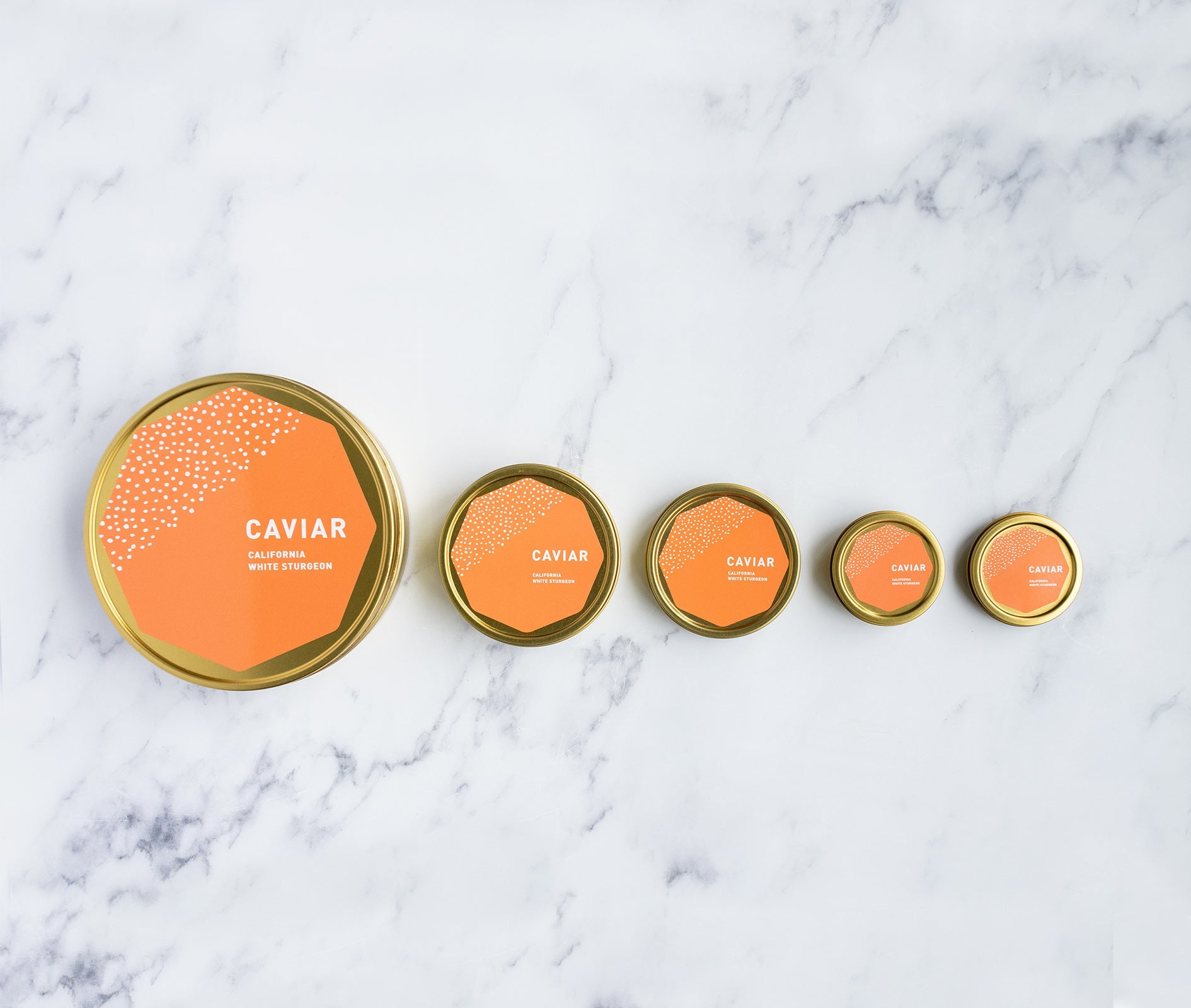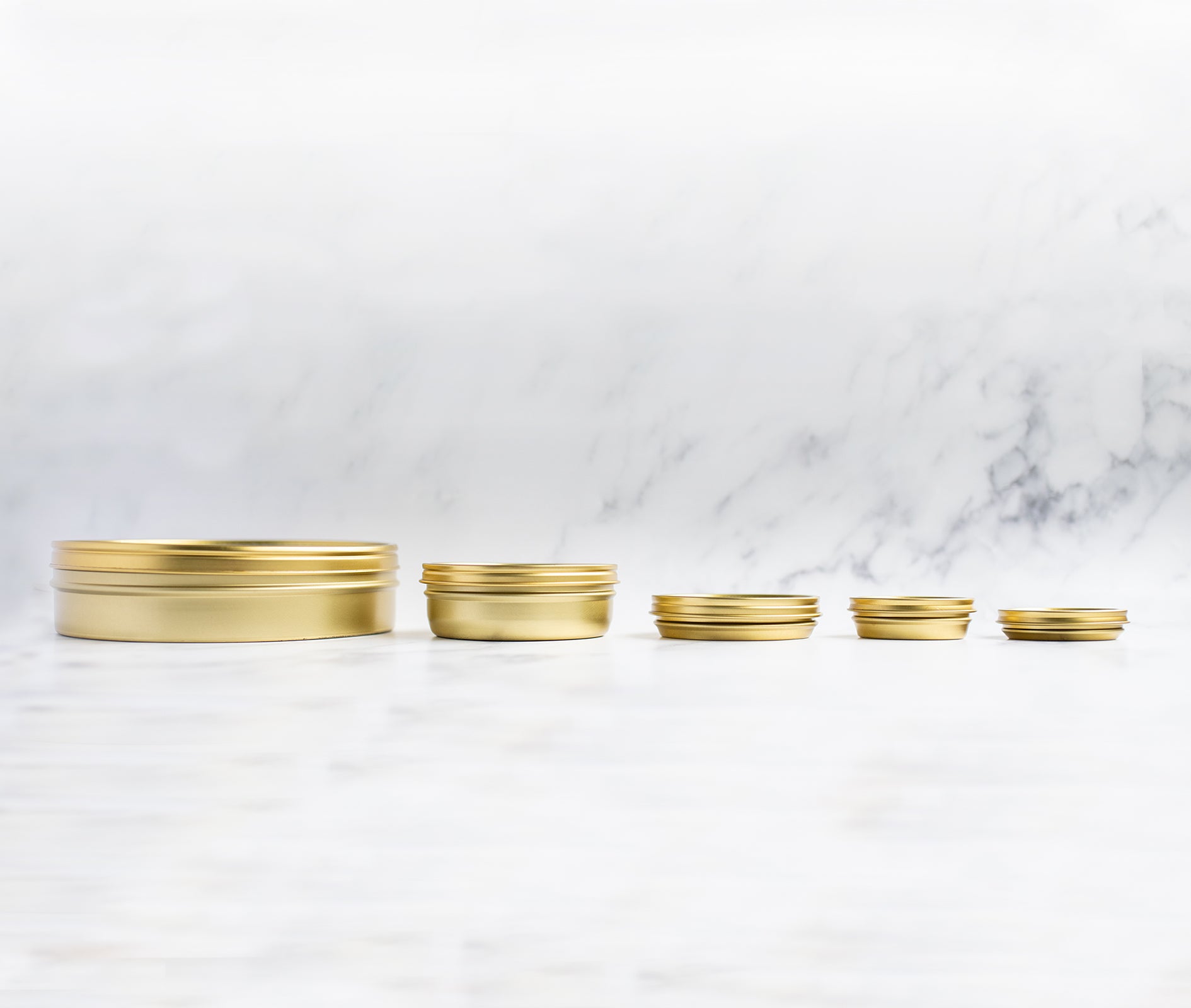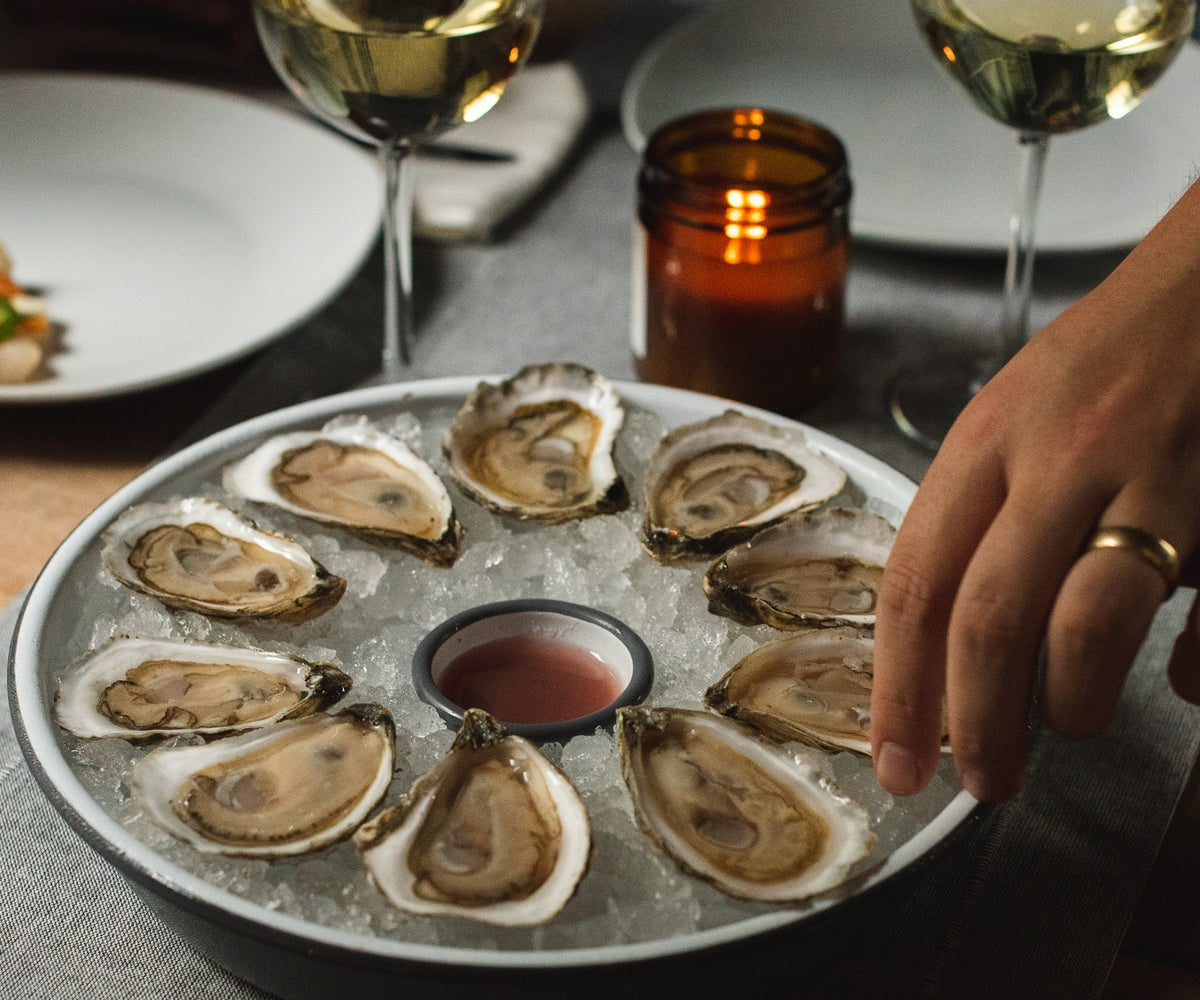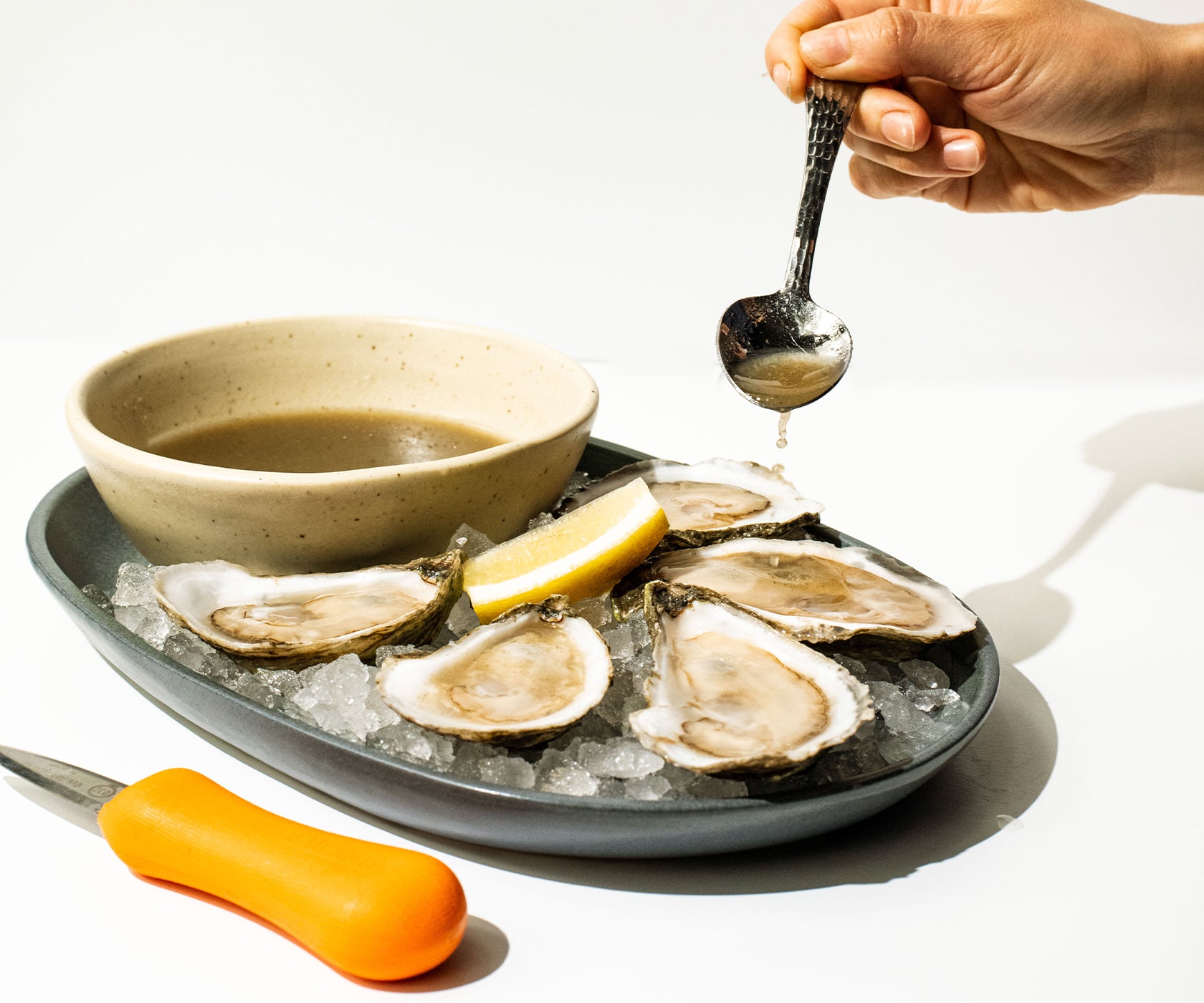CAVIAR FAQ
- How much should I buy?
-
30g (serves 1-2)
100g (serves 5-8)
250g (serves 10-15)
1000g (serves 20-40) - Ok, I bought it. Now what?
-
Congrats! You made a great choice, pal.
The caviar is totally fine if it is unopened for 4-6 weeks from receipt in the refrigerator. Once opened, the caviar should be eaten within 2-3 days. The longer the tin has been opened, the more the caviar degrades in quality so we suggest eating right away after the tin has been unsealed.
- How do I open this damn thing?
-
Pros know to use a caviar key (a tool made for this very purpose). Real pros will use anything within arms reach—a screwdriver, a shucking knife, anything that gives you leverage to pry the lid open.
- How do I store caviar?
-
The caviar tin should be kept as cold as possible. Pull your tin out of the packaging and put it in a bowl filled with ice. Place in the fridge and continue to replenish the ice so that it stays chilled. The caviar is fine for 4 weeks if it is unopened. Once opened, the caviar should be eaten within 2-3 days. The longer the tin has been opened, the more the caviar degrades in quality so we suggest eating right away after the tin has been unsealed – that should be easy.
- How do I know if it's bad?
-
Oh you'll know...trust us.

